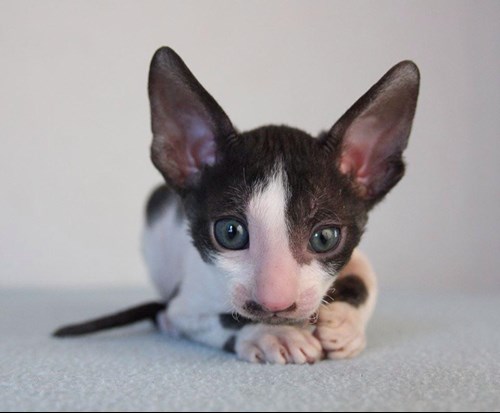Cornish Rex
The Cornish Rex got its start in Cornwall, England, in 1950 when a housecat named Serena gave birth to a male kitten with wavy coat and a slim, Siamese-like body. This male, named Kallibunker, was later bred with his mother and some of his sisters, revealing that the wavy coat was inherited as an autosomal recessive trait. Since the breed was new and the gene pool was narrow, breeders used British Shorthairs, Burmese, Siamese, and Russian Blues to widen the gene pool and refine the breed’s features.
The first Cornish Rex was imported to Sweden from Denmark in 1968, and the breed quickly gained popularity due to its unique and unusual appearance, with rumors that the breed was allergy friendly and even people with allergies could handle Cornish rex better. New breeding cats were soon imported, and soon the breed had a solid footing in Sweden. Today, the Cornish Rex is a popular breed in Sweden, with many active breeders across the country and kittens available year-round. Approximately 250–300 Cornish Rex cats are registered annually in SVERAK (Sweden’s cat association). Scandinavian Cornish Rexes are of high quality and perform well at cat shows.
The Cornish Rex is highly social and active. If you want a cat that simply sits quietly on the couch, this breed isn’t for you. However, they’re perfect for someone who wants a cozy lap warmer when they sit down. Cornish Rexes love company and will likely climb onto you the moment you sit. They are very active and athletic, always wanting to be involved in whatever you’re doing and life is never boring with these little monkeys. You might find yourself ironing clothes with a cat on your shoulder or pulling another out of the fridge where it’s munching on your cucumber. They'll eat almost anything, so it’s wise to keep an eye on their waistline. Still, they’re like chocolate pralines, once you have one, it’s hard to resist wanting more!

Sweetpurr's Chunky Monkey, CRX n 03
